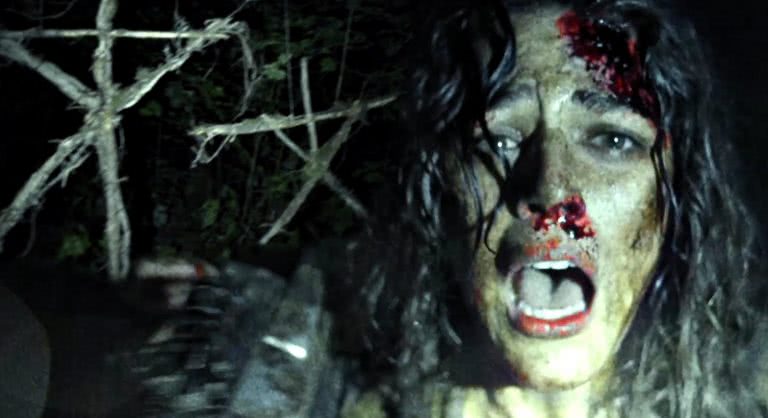☆
All good horror films thrive on the tension between the known and the unknown. The power of found footage flicks is about accentuating that divide: about taking a reasonable, overtly ‘filmed’ approach to something utterly unreasonable, applying logic to forces that actively refuse it.
In that way the original The Blair Witch Project is an exercise in how the found footage sub-genre can be manipulated to provide a kind of terror that normal narrative films can barely touch upon. By contrast, Blair Witch, the third film in the series following the disastrous, non-found footage Book Of Shadows: Blair Witch 2, is an exercise in sheer, unadulterated boredom.
The film is ostensibly a remake, and writer director team Simon Barrett and Adam Wingard – who, it should be stressed, have done much better work in the past – so slavishly adhere to the rules and plot of the original that they leave themselves no room to bring anything fresh to the viewing experience.
So you know this story: team of young filmmakers head into the woods, spooky happenings occur, yadda yadda yadda, witch. There are occasional flourishes of creativity, and having two of the characters use old camcorders while the rest of the cast are equipped with flashy, hands-free devices proves a neat way of calling back to the original while differentiating the characters’ POV.
But such tricks are just that, tricks, and prove to be quickly forgotten, drowned out amidst a sea of uninspired scares and dull set pieces. A particularly lengthy scene featuring a drone camera, a tall tree, and a whimpering, insufferably annoying heroine grates the most, providing not a single shred of tension.
Worse still, Wingard and Barrett have the gall to open their flick with the terrifying, legendary final scene from the original, and over the course of Blair Witch they try and replicate the galvanising power of that ‘face the wall’ setpiece with ever decreasing levels of success. Eventually they just give up, and limply, unironically reshoot it, delivering perhaps the least unnerving climax modern horror cinema has yet seen in the process.
And that, ultimately, is the film’s greatest flaw: it just isn’t scary. It isn’t even vaguely scary. Indeed, you can replicate the experience of watching the film at home if you so wish: just turn off all the lights in your house, whip out a dodgy flash light and get a mate to shout at you as you run up and down a corridor, snivelling. Dreck


































